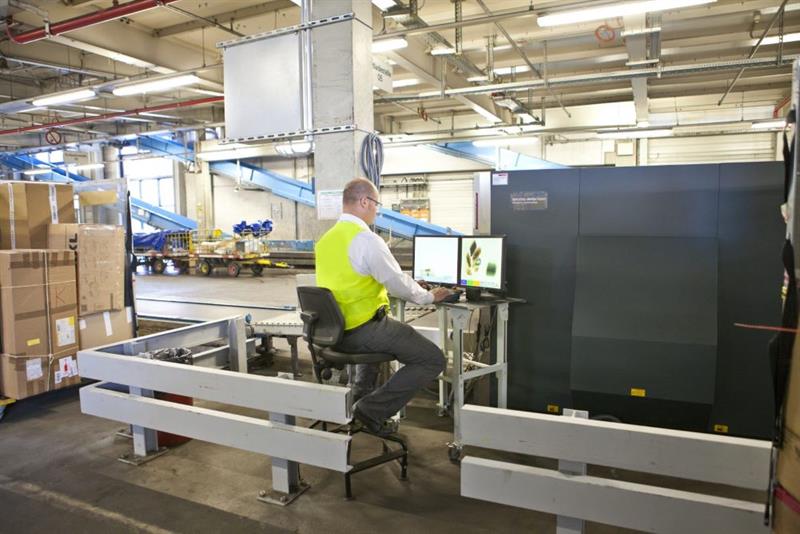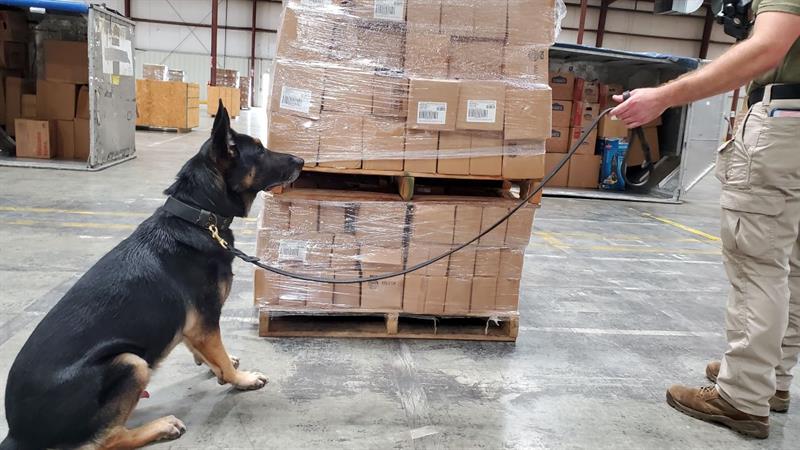
Going into 2023, the air cargo industry faces threats that are well established such as improvised explosive devices, dangerous goods including lithium batteries, prohibited items and contraband such as narcotics and illegal currency. The growth of international trade and e-commerce, shorter delivery times and interconnected global supply chains means mandatory security screening and in screening for contraband and dangerous goods has increased.
The technology to counter these threats is already in use, says Daan Van Vroonhoven, Global Director Aviation at Smiths Detection, who highlights high penetration X-ray units, CT scanning technology, AI object recognition algorithms, trace detection and networked alarm aggregation.
He says, “Technological advances and innovations allow air cargo companies to enhance security and future-proof their operation. They are leading to increasingly automated screening solutions which not only boost security levels but reduce operator burden and significantly speed up the screening process, creating a far more seamless flow of goods.”
CT scanners produce volumetric 3D X-ray images examining shipment contents from every angle, with the data collected making precise measurements and accurate judgements on substances within the shipment. Operators are only required when the system flags up something suspicious, meaning fewer operators can manage growing volumes.
Van Vroonhoven says, “CT technology therefore delivers the highest standards of security as well as improving operational efficiencies and productivity and, ultimately, lowering costs. The systems are becoming more and more energy efficient and therefore cost-effective, which is crucial in today’s business environment.”

He adds that cargo screening equipment is being enhanced with ‘smart’ algorithms offering powerful and accurate detection for the ever expanding list of dangerous, prohibited and contraband goods. Algorithms can be trained through machine learning and are available on both conventional X-ray systems and explosive detection systems, reducing the burden of analysing images.
Automated solutions are vital for keeping cargo moving and unlike humans, the technology does not get tired, make mistakes and it is impartial. AI algorithms have the capability to drive down false alarm rates and in the course of time, the automatic explosives detection capability of a scanner can be combined with object detection for more accurate judgements on the threat potential of the shipment.
Van Vroonhoven says, “The alarms triggered by automatic explosives detection algorithms could be verified by object recognition algorithms. If no threat is identified, the freight would not need to be rechecked by an operator. This would massively accelerate the movement of goods through screening checks.”
In the future, X-ray diffraction technology could take security to the next level. It provides highly accurate identification of molecular structures and offers even higher levels of accuracy in material analysis and detecting substances.
For major hubs, wide-area networks (WANs) enabling centralised and remote image evaluation will enhance security. Centralisation is not a new concept, says Van Vroonhoven, but image analysis is a new application. They can facilitate the real-time sharing of images between different areas of a building, a site or even countries and continents.
Van Vroonhoven says, “On a country-to-country or even continental level, image sharing via WANs would enable more sophisticated data analysis across global security networks to significantly boost security outcomes, with one set of scanned images for both outbound security and inbound customs clearance at the destination.”
The future of air cargo security will be driven by data informing risk-based decisions and using integrated sensors and devices from multiple providers, says Van Vroonhoven, who highlights Open Architecture as an area for development. It is already being utilised and will deliver system flexibility, faster innovation and time to market and fewer costly upgrades.
Van Vroonhoven says, “The ability to have multiple algorithms from different suppliers, would significantly boost detection capabilities and meet the needs of different stakeholders. The underlying goal will always be to improve operational performance and security outcomes.”
Risk-based screening as a complement to other developments is widely acknowledged as the next major step for screening air cargo. Aggregating data from various sources could provide a more refined risk analysis, and integrated, networked security solutions should automatically trigger different security measures in response to changing threats or threat levels such as by applying different detection algorithms.
He says, “Many of the latest security screening solutions can integrate sensors and interface with wider information systems and could respond to changing threat levels by flight, destination, or sender. The technology is here.”
Canine senses
Technology key to keeping cargo safe and secure, but nothing can match a canine’s sense of smell. The TSA Modernization Act 2018 created the framework to accept applicants to become a Certified Cargo Screening Facility – Canine (CCSF-K9), opening the market up to private companies, supporting the TSA’s screening services.
Establishing operations in 2016, veteran-owned Global K9 Group (GK9PG) has grown from 10 handlers and 20 employees when the Act started to over 400 handlers and 500 employees. It had been training canines for the Department of Defense and Department of Veterans Affairs and in March 2018, GK9PG changed its focus when it knew the Act would come into force at some point during the year.
Eric Hare, CEO of GK9PG, says, “On December 7 [2018], we were the first company that was certified by the TSA to operate under the programme. By December 18, we were screening for multiple facilities in California so we were the first certified and the first to be screening under this programme for the TSA.”
To be certified, the company has to submit an operational implementation plan setting out how it will train and screen people. It takes about 17 weeks to train them, eight weeks each for the dog and their handler, who are certified together by a TSA-approved certifier, then they can go and screen cargo in independent facilities. They are managed through the company and all regulatory requirements come from the TSA, explains Hare.
As it grew with the programme, GK9PG has grown to become a full service solution for aviation security by offering technology including artificial intelligence, teams doing physical searches and offering equipment sales and leasing.
Belgian Malinois and German Shepherds are GK9PG’s preferred breeds due to their superior drive and stamina when performing in a warehouse environment. They are intelligent, hardworking, do not get distracted easily and are sociable, making them well-rounded animals who can be trained quickly and they can have a long and productive working life.

GK9PG has a 75,000 square-foot training facility that is cargo focused with five main venues and multiple realistic lanes to look like some of the best warehouses and some of the less good ones covering different cargoes and commodities.
Studies have confirmed that canines are the most efficient and accurate detection tool, with Hare commenting that the team call them “four-legged bio sensors” because a properly trained canine with the right handler is an unbeatable combination.
Hare says, “If you have that, there is no better protection for passengers, cargo and aircraft. The piece of ROI that comes for our client partners and the supply chain is that the canines are 85% faster than the traditional methods which have been used in screening cargo.”
This article was published in the February 2023 issue of Air Logistics International, click here to read more.
